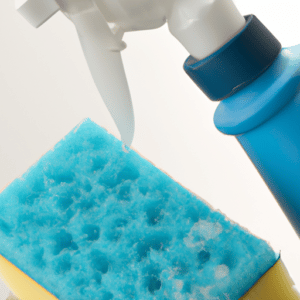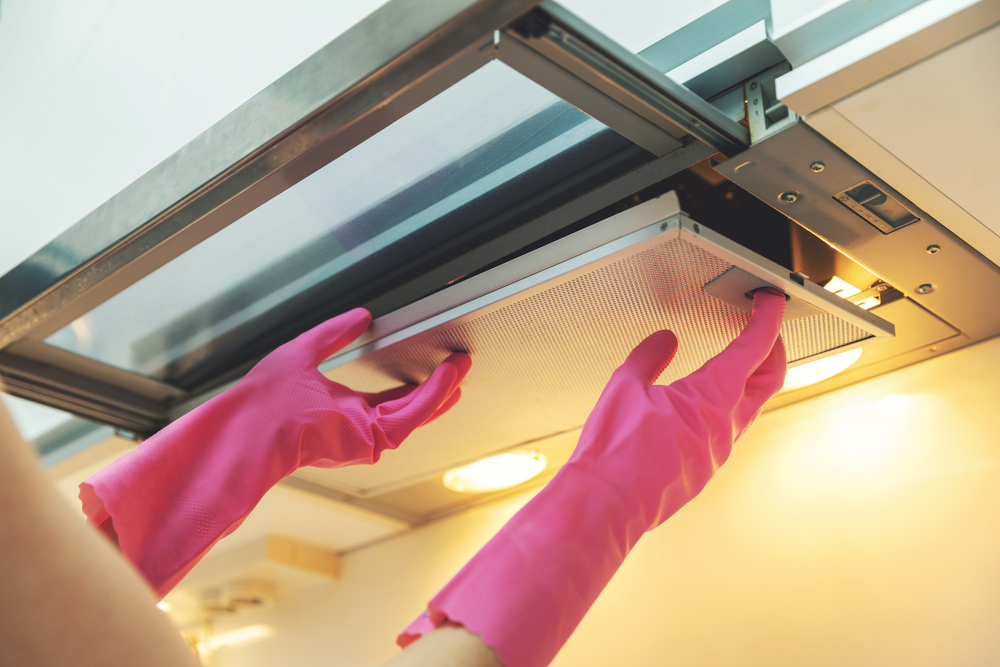Stainless steel appliances are pillars of beauty and function in the UK. They feature a sleek, expensive appearance and non-porous, anti-bacterial surfaces. One great example of this is the cooker hood located above your oven. It is a facility that protects your house from grease and fumes while maintaining clean, healthy air.
Stainless steel cooker hoods are exceptionally long-lasting and resistant to rust, but they still need regular maintenance. You might wonder how to clean a stainless steel cooker hood, and this article can help.
Why Clean Your Cooker Hood?
If a hood is working correctly, it will get covered in a greasy residue. Your new cooker hood is the unsung hero of the kitchen, yet it’s seldom cleaned. Every time you cook and switch on the exhaust fan, all smoke and aromas are safely removed from your home and trapped in carbon filters and grease filters.
Protect Your Investment
When cleaned properly, cooker hoods will continue to work and look great. But, if you neglect your cooker hoods and put off your extractor fan cleaning, they might not trap the smoke and grease particles as well.
Fire Safety
Extractor ventilation fans and hoods need to be regularly cleaned to reduce the possibility of fires. Unfortunately, if the fan on the top of your vent is clogged with cooking grease and if it becomes overheated due to less airflow, you have a fire hazard – this is especially true for hoods that use a paper filter.
The longer you put off cleaning your hood and grease filters, the harder it will be to clean. Here’s an easy-to-follow guide for giving your stainless steel or glass cooker hood an exceptional clean.
What Materials to Gather:
Stainless steel appliances are often found in British kitchens. Therefore, many cleaning products are designed specifically for cleaning steel or glass surfaces. However, other cleaning products can work just as well.
Any of the following will produce a clean cooker hood:
- Windex or another household glass cleaner: This is a good product for regular cleanings, such as removing fingerprints or a sticky mess.
- White vinegar and water: Vinegar is known for its disinfectant properties and ability to leave a sparkling shine.
- Stainless steel oven cleaner: If you already have stainless steel oven cleaner, you can use it to clean your cooker hood effectively. The formula is designed for this job, so it should work wonderfully. However, be sure the formula is for cleaning stainless steel; some regular oven cleaners may discolour the finish.
- Baking soda and boiling water: Baking soda or bicarbonate of soda allows you to scrub off tough grease build-up without being too harsh on the surface. Adding boiling water helps to loosen the grease and grime.
- Dish soap and water: Dish soap is mild and designed to cut grease.
- Microfiber soft cloth: This soft cloth is absorbent and doesn’t leave behind lots of tiny fibres.
- Paper towels: Paper towels may help absorb extra water in the drying process.
- Soft sponge: A non-abrasive sponge is great for scrubbing.
- Soft-bristled toothbrush: For a deeper clean, a toothbrush offers excellent scrubbing power without being too harsh.
- WD40, olive oil, or baby oil: Once completely dry, you can add a few drops of these for a dazzling shine.
- A bowl or a spray bottle: Depending on your cleaner of choice, grab a bowl or a spray bottle to help you apply the cleaning solution.
What to Avoid
Stainless steel is tough, but it can still get damaged. Certain cleaners and tools may scratch or discolour your stainless steel’s finish. Avoid using the following products:
- Jewellery polish cleaner
- Nail polish remover
- Plain vinegar
- Table salt
- Chloride or chlorine bleach
- Steel wool, steel brushes, or abrasive cleaning pads
Basic Stainless Steel Surface Cleaning
Step 1

First, put on some music or a podcast; this might take a little while. Then, use a spray bottle for your chosen product or combine ingredients in a bowl with water.
Spray or wipe your cleaner on the range hood, then wipe it off in the direction of the grain with your cloth or sponge.
Remember, coarse sponges, steel wool, and wire brushes may scratch a brushed stainless steel finish.
Step 2
Repeat step 1 until all sticky grease is lifted and removed from the surfaces. For stuck-on-stains, make use of a toothbrush and scrub them off.
Be sure to scrub and wipe with the grain on the brushed finish. The grain is the tiny directional lines that run through the steel. You may have to look closely to see it.
When you go against the grain with your cloth or cleaning tool, you may leave unsightly residue behind or scratch the finish.
Step 3
Rinse the hood or filters with cold or warm water, and wipe it dry with a cloth or paper towel. Use ceiling fans and exhaust fans, or open the windows to speed up the drying process of the filters.
Make sure your surface is fully rinsed and free of cleaner to avoid residue or scratching.
Step 4
You are almost done! Don’t forget to wipe down or dust the walls around the cooker hood. Some people choose to do their stovetop simultaneously, as soapy water or liquid cleaner may drip down anyway.
Finally, wipe a few drops of baby oil or WD 40 onto the dry surface for a sparkling shine. This will help prevent streaks and watermarks after the rinse.
How to Clean Extractor Hood Filters
Located under your stainless steel cooker hood, you’ll likely find your extractor hood filters. This mesh grate in front of the extractor fan is an essential part of your hood, as it works to collect all of the grease and particles from getting into extraction vents.
When the filter does its job, the smoke and cooking smells are vented safely out of your home. In addition, having a clean working filter helps your vents from becoming clogged and damaged.
Step 1
Carefully remove your filters. If you aren’t sure how to do this, consult your owner’s manual. However, most of the time, they easily slide or pop off.
Step 2
Fill your sink or bathtub full of hot, soapy water and let them soak before cleaning. Alternatively, some filters are dishwasher safe. If you go with the dishwasher, be sure to put them on the hottest cycle.
Step 3
Soak your filters, making sure each side gets fully submerged for at least 20 minutes. This will make the cleaning process much easier for you.
After a long soak, scrub your filters with a gentle cleaning brush. Unfortunately, filters aren’t cleaned often, so you may have to repeat this process several times until fully cleaned.
Step 4
Rinse with clean water thoroughly the filter fully dry before using it. When it is dry, reinsert the filter back into the extractor hood.
After a few washes, you may consider a replacement if the filter isn’t coming clean. If your cooker hood includes paper filters, you will not be able to wash them and instead can just replace them.
How Do I Clean the Light Bulb Casing on an Extractor Fan?
Most kitchen extractors and cooker covers have lights. However, the light and its covering are likely to become very dirty due to their position above the hob. Cleaning them is quick and easy, however.
You can gently wash the body with a cloth by removing it and leaving it to soak in hot water and soap in your sink for about 30 minutes. Then, for stubborn grease build-up, gently scrub it with a stiff sponge or soft toothbrush. You can also use glass cleaner for this. It may be your best bet for removing all the grease build-up.
Tips for Keeping a Cooker Hood Clean and Grease-Free
It is worth noting that a key reason for a sticky cook hood is frying. Cutting down on greasy ingredients can help keep your kitchen clean longer. Plus, it’s no secret that fried foods aren’t the best for the body. Fry less!
Another tip is to clean your hood and surrounding areas with a wet cloth after cooking. This will help reduce build-up regularly and reduce the need for deep clean washing.
Keep Your Cooker Hood Clean
The kitchen is the heart of the home. It is where families come together to eat, relax, and enjoy each other’s company. Spending a bit of time cleaning and keeping your cooker hood beautiful and functioning is time well spent. It makes for a safe, clean environment to cook and bake!
To keep your extractor hood surface working, we recommend washing it each month with bicarbonate of soda and water or hiring a professional every two or three years for a thorough and complete cleaning. Not only does learning how to clean a stainless steel cooker hood help to maintain its efficiency, but it can increase safety from fires and improve overall sanitisation in your home.

